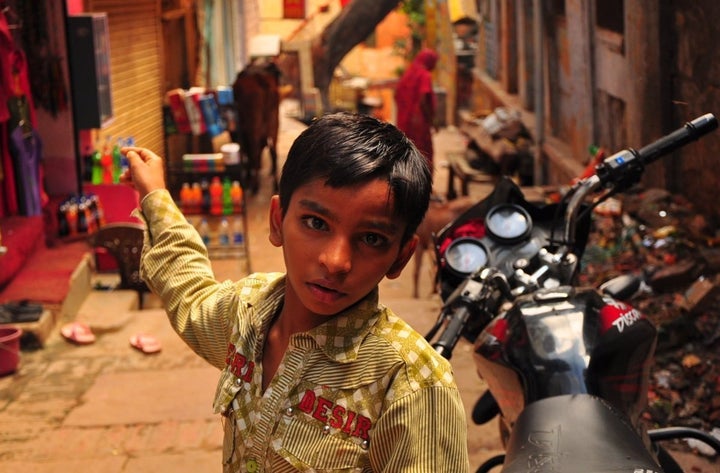
Consider this common scenario: An ailing mother with a sick child walks several miles to a health clinic. Half a day later, she reaches the clinic, only to realize that there are no doctors or health workers on service. Having travelled a long distance, she decides to wait under a tree amongst other expectant patients. She unwraps the cloth holding her treasured food supplies, distributing it among family members who might have accompanied her. As the daylight fades away, she realizes she can no longer wait; she has run out of her food ration for the day, lost a day's wages, spent her meager savings on getting to the clinic, and her child feels feverish and has consistently refused to eat. Unfortunately, this story usually ends in death.
Kate Tulenko, in her book Insourced argues that the U.S. drains healthcare workers from poor countries, enabling the above the scenario to exist. A quarter of physicians in the U.S. are imported mostly from developing countries; a quarter of which come from India, where the deficit of health-care workers is amongst the largest in the world.
How do these developing countries cope? They don't. Billions of dollars of healthcare aide from the U.S. may help with improving infrastructure, but there is no replacement for the lost healthcare providers. In addition, receiving aid only serves to weaken their bargaining power to reform U.S. laws that attract throngs of migrating health workers. In-country strategies to regulate retention are often fraught with implementation challenges and yield subpar results, at best.
Tulenko presents a stark analysis of the economic impact of each physician lost by these developing countries. A study in Malawi showed that for each physician lost, the country's economy suffered a net loss of $433,490 over the years of his career. This amount, if invested in a bank in Malawi would yield over $46 million at an interest rate of 25 percent. And yet, there are more Malawian physicians in Manchester, England than in Malawi.
How does this brain drain affect the programs supported by foreign aid for development? Take the case of HIV/AIDS, which, over the last decade has become one of the most heavily funded programs. From 2009 to 2013, the President's Emergency Plan for AIDS Relief (PEPFAR) alone has committed $48 billion to combating HIV/AIDS. Tulenko says that millions of these dollars are not utilized as there are no personnel to administer these services. Also, such heavily-funded vertical programs have created a tug-of-war for health workers between primary care clinics versus specialized HIV clinics. There is large scale migration of health workers from primary care clinics to HIV clinics, often negatively impacting access to treatment for simple ailments such as diarrhea and pneumonia.
On the U.S. front, these foreign-trained health workers make up a large deficit in the health system. However, Tulenko points out the pitfalls of employing health workers unfamiliar with the local culture; differing attitudes towards illness, health or death as well as the social norms that govern them, can often negatively impact patient's health. Also, a large percentage of foreign trained doctors initially serve in minority community areas, diminishing the need for the government to focus its resources towards training health workers from minority communities in the U.S. If health workers are trained from African American and Latino communities, there is a greater likelihood that they continue to practice in minority areas.
This discussion on the brain-drain of health workers from developing countries would be incomplete without bringing to light the native conditions that often motivate these workers to leave their countries in search for better opportunities. Having been a practicing health worker in India, I could argue that if working conditions, payment structures, living facilities for health workers, especially those in rural areas could be improved, perhaps they would have an incentive to stay back. Also, it is a faulty system that invests in training physicians from public funding, fully aware that a large percentage of those physicians will not be serving the public that funded their education.
Change needs to start somewhere. While several of the poorer countries are making efforts to create circumstances which would more likely retain their health workers, Tulenko presents an example of how the West has attempted to attenuate this brain-drain. In recent years, the National Health Service in England responded to the pressure from developing countries to reform its regulations that supported importing foreign-trained physicians. Over the last decade, the NHS has doubled its medical school slots and invested more in training physicians domestically, sparing poor countries of their health workers.
Tulenko proposes some strategies the U.S should consider as it revamps its healthcare system. Strengthening training facilities for health workers, especially in rural areas would not only produce more workers but also support development of minority groups. One doctor from India accounts for only 0.0001 percent of its physicians but recruiting a physician from Liberia denies it one percent of its physicians. So becoming more cognizant of where the health workers are being imported from could go a long way in enabling poor countries to serve its people better.
This in the hope that the lone mother who does make it to a remote clinic will soon have someone to take care of her ailing child.